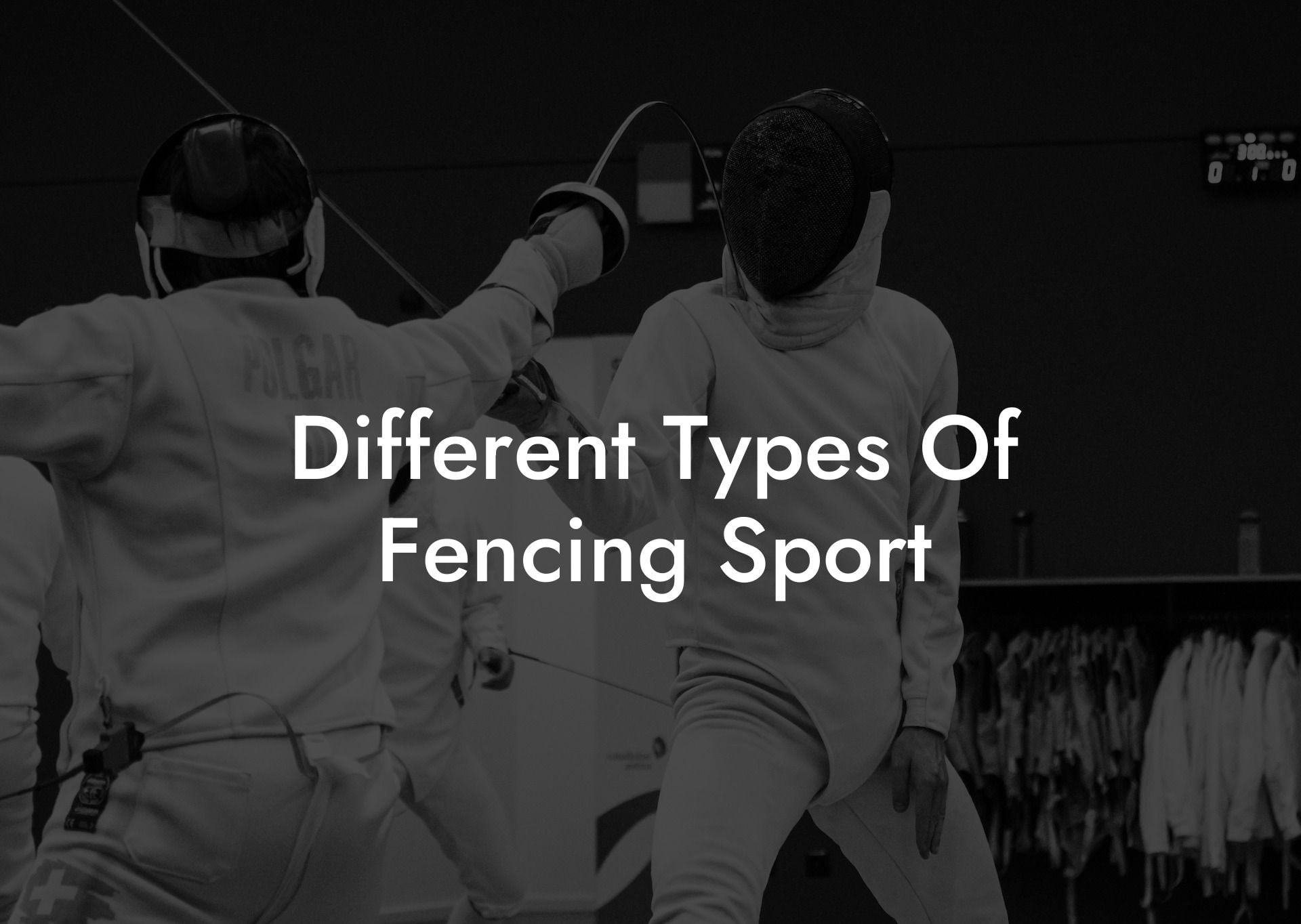The world of fencing is an exciting and dynamic sport with a rich history and various styles. If you're intrigued by this elegant and skillful sport, it's essential to understand the different types of fencing to determine which one might be the best fit for you. In this blog post, we'll explore the unique aspects of each fencing discipline, including their historical origins, techniques, and equipment. Ready to dive into the captivating world of fencing? Let's go!
Different Types Of Fencing Sport Table of Contents
The Three Main Types of Fencing
1. Foil
Foil is the most popular and widely practiced type of fencing. Its origins can be traced back to the 17th century when it was developed as a training weapon for smallsword duels. Today, foil fencing is a fast-paced and strategic sport that emphasizes precision, agility, and cunning tactics.
- Target area: Only hits to the torso, including the back, are counted as valid points.
- Techniques: In foil fencing, fencers focus on speed, accuracy, and timing to outmaneuver their opponents and score hits.
- Equipment: Foil fencers wear a metallic vest called a lamé that connects to an electronic scoring system. The foil itself has a flexible blade, which is topped with a blunt, spring-loaded button known as the tip.
2. Épée
Épée fencing is the modern descendant of the classical dueling weapon, with its roots in the 19th-century French weapon known as the rapier. Épée fencing is characterized by its emphasis on thrusting rather than cutting, making it a more defensive-oriented sport.
- Target area: The entire body, from head to toe, is a valid target.
- Techniques: Épée fencers rely on patience and tactical skill to wait for an opportune moment for an attack or counterattack. A key aspect of épée fencing is the concept of "right of way," which gives priority to the attacker.
- Equipment: The épée has a stiffer blade than the foil and a larger guard for hand protection. Like the foil, it also has a pointed, spring-loaded tip.
3. Sabre
Sabre fencing originated in the 18th century as a military weapon, used by cavalry officers during close combat. Today, sabre fencing is a thrilling and high-energy sport, known for its fast, aggressive nature and dynamic movements.
- Target area: Valid target areas include the entire upper body, from the waist up, including the arms and head.
- Techniques: Unlike foil and épée, sabre fencing allows for both cutting and thrusting actions. Fencers use quick footwork, powerful lunges, and swift parries to outwit their opponents.
- Equipment: The sabre has a curved blade with a flat, blunt edge that can be used to deliver a cut. Fencers wear a metallic jacket called a lamé and a mask with a metallic covering for electronic scoring.
Different Types Of Fencing Sport Example:
HTML 
Now that you've learned about the unique aspects of foil, épée, and sabre fencing, you're well-equipped to make an informed decision about which style to pursue. Whichever type of fencing you choose, you'll be joining a vibrant community of athletes who are passionate about their sport. Don't forget to share this article with fellow fencing enthusiasts, and be sure to explore other Anchorage Fencing Club guides for more insights into the wonderful world of fencing. See you on the piste!













